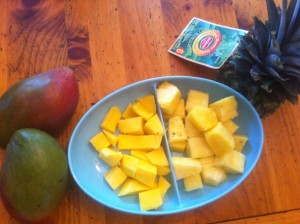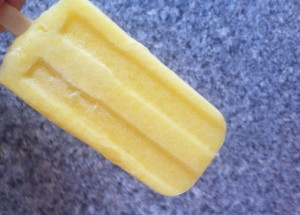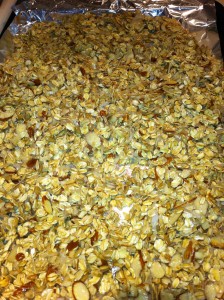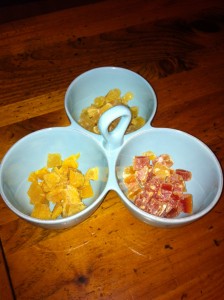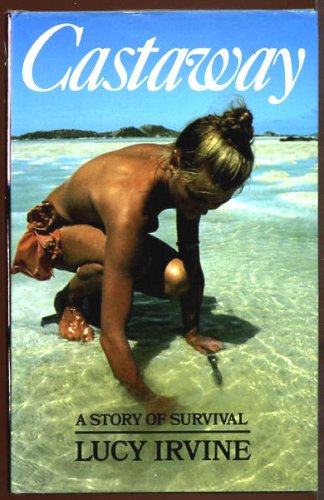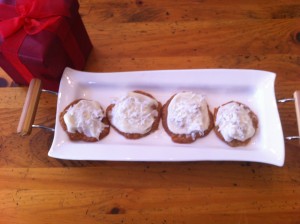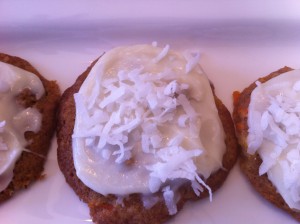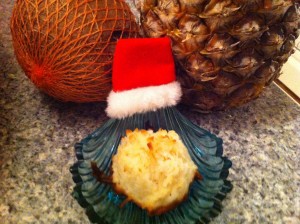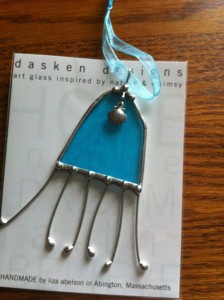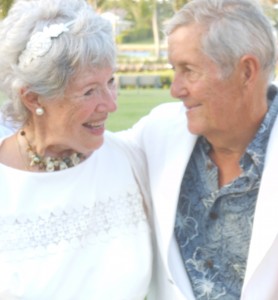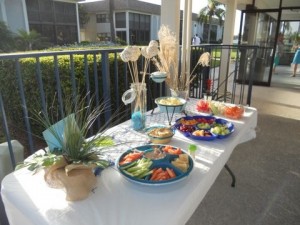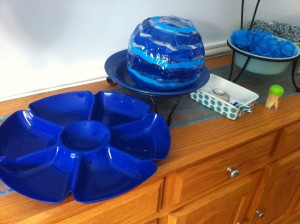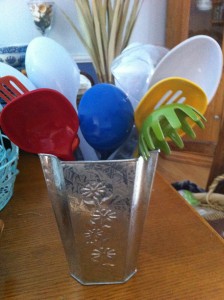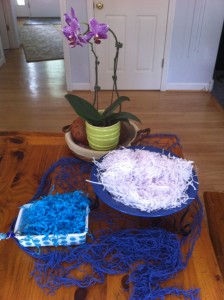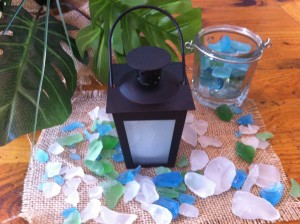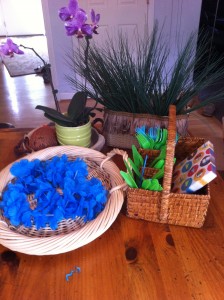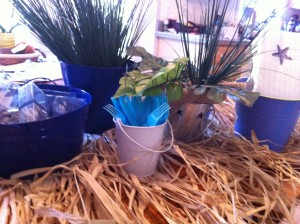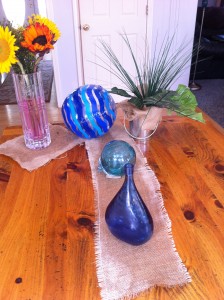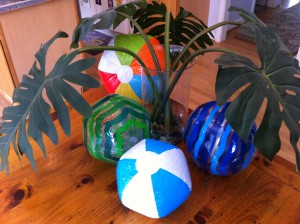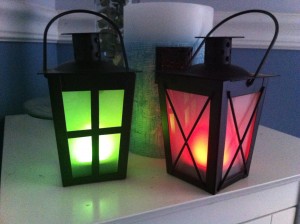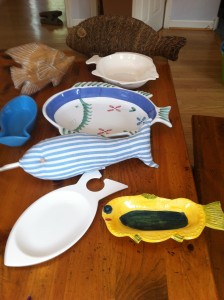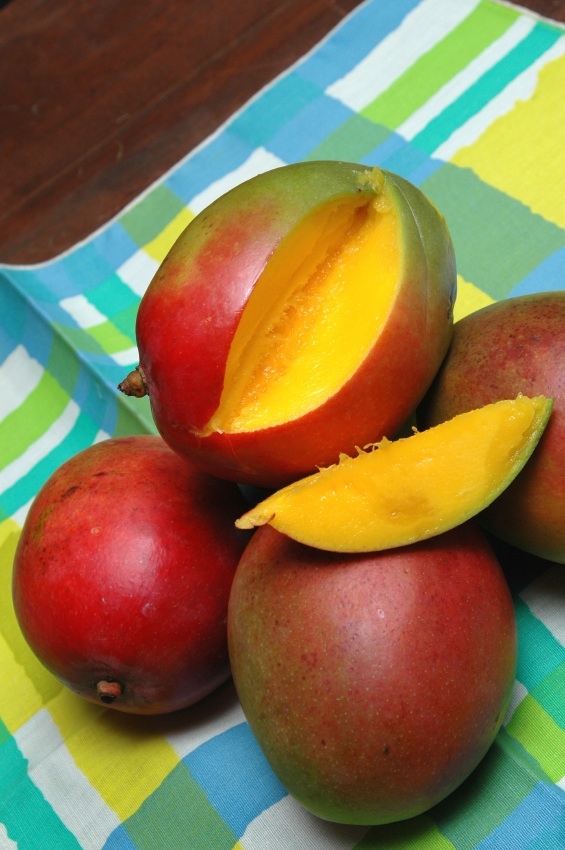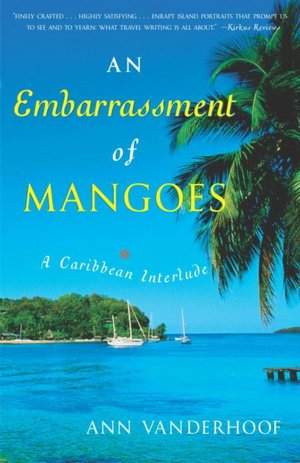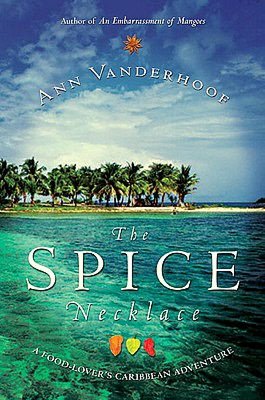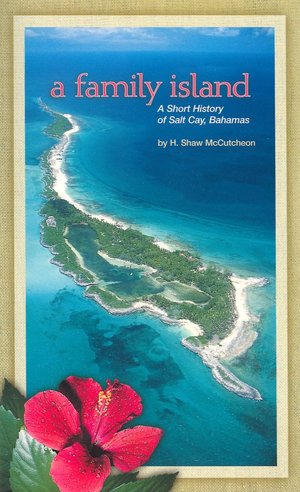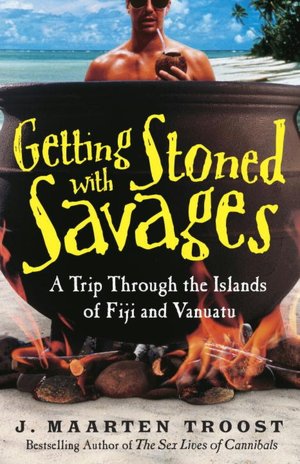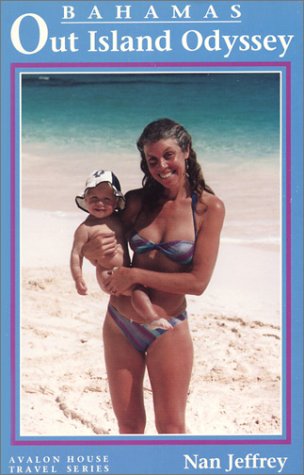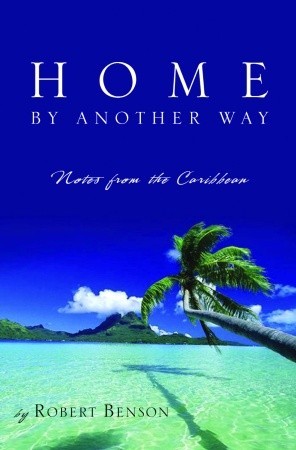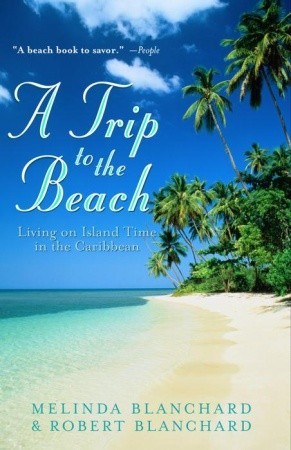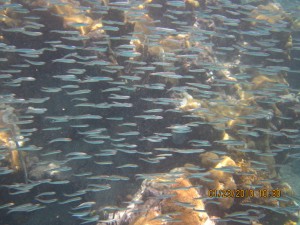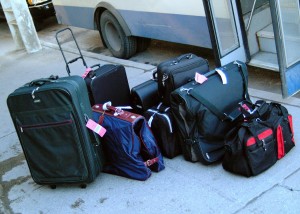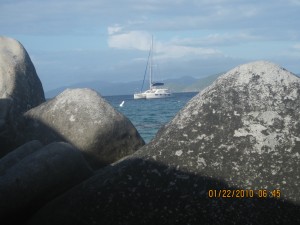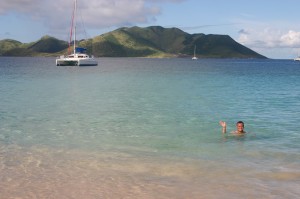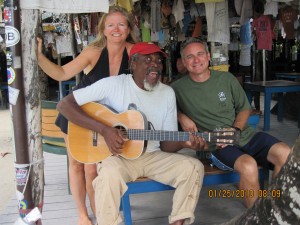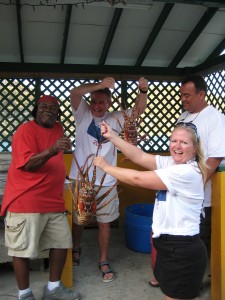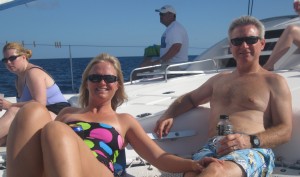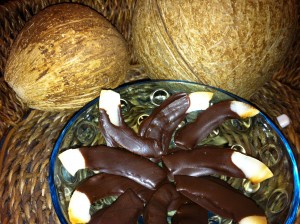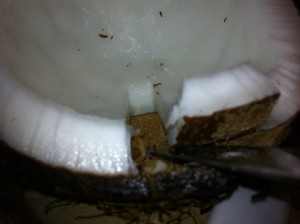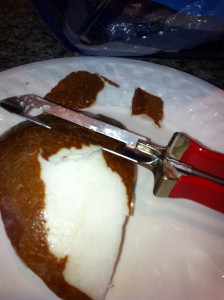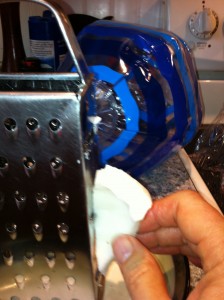- See How This Couple Is Living the Dream
Each year on his Christmas card, I stared dreamily at Tom’s photos of his Caribbean sailing vacations. I always wanted to hear the full story of how he and his wife, Kristi, were able to sail in the Caribbean, it seemed like such an out-of-reach, exotic adventure. I had so many questions, where did they sail, what is involved, but we never got around to talking about it. Today, I finally asked the questions for my bucket list trip and he gave me great answers. I hope they help you learn how to take a sailing trip to the British Virgin Islands, or just to daydream about a sailing trip to the Caribbean.
Pardon me for a small tropical interruption. Just thought a little Jimmy Buffett could set the sailing mood. Be sure to stop by iTunes, Amazon MP3 or Google play and purchase this song, One Particular Harbor, by Jimmy Buffett. A must-have for your summer playlist:)
Back to our interview…A little background, Tom Thompson of Lucky Dog Sailing, is a U.S. Coast Guard certified captain, sailing out of Belmont Harbor, Chicago, IL. He has fifteen years sailing experience on Lake Michigan. He also has made 5 charter sailing trips to the BVI and St. Martin/St. Barts.
Where did you go on your first Tropical Sailing vacation? Did you have a captain?
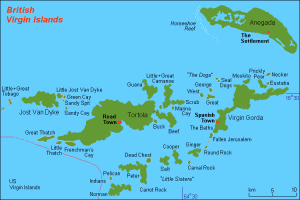
Thanks to Wikipedia for this map:) Click to see bigger picture.
Our first charter trip was to the
British Virgin Islands. The BVI is a group of islands just southeast of St. Thomas & St John. The largest island in the BVI is Tortola and it is surrounded by many barrier islands that form a “ring” around Tortola. You sail in the protected waters between Tortola and the barrier islands, mostly in the Sir Francis Drake channel and basically do a circle around Tortola. The waters around the BVI are deep with few reefs, navigation is line-of-site, and there are a lot of mooring balls for overnight security. Our first trip was on a Lagoon 38 catamaran with 4 cabins and 2 heads. We now have upgraded to a 44’ catamaran which provides more living/dining space and a private head for each of the 4 cabins.
( Editor’s note, this is the manufacturer’s video and I just thought it was cool and would give you a feel for the 44′ catamaran. I did not receive compensation — but if they offered, I would not turn down a free boat:)
There are 2 major yacht charter companies on Tortola, Sunsail and The Moorings, each with many choices in styles (mono-hull or catamaran) and lengths of sailboats. Depending on your sailing experience, you can Captain the boat yourself (you have to submit a sailing resume to the company) or you can hire a Captain (through the charter company) to take you around the islands. Sunsail also offers a Flotilla option, which we did our first time and would highly recommend for all first timers. This is where a group of charter boats, with a lead boat from the company, travel to the same spot every night, but you are pretty much on your own all day. Each night you meet for a briefing for the next day, and they also have some social nights, if you’d like to join the group on shore. This gives you peace of mind, as they make sure each boat arrives to the harbor each afternoon and help you set anchor if needed. The lead boat has a mechanic on board, so is there to assist with any minor issues with the sailboat that inevitably come up. This gives you a lot of flexibility and feeling that you are doing it alone (as you don’t follow each other all day), but the security that someone is looking out for you.

Dead Man’s Cove, Peter Island. Photo courtesy of Kristi Moen© Click on photo to see full size.
(If you click on the photo, you can see the larger size and it is even more beautiful. Kristi -photographer and helmswoman- says that Dead Man’s Cove is one of their favorite lunch spots. “There is an incredible resort with a great lanai-type lunch spot on the beach (only place where you have to dine with “real” clothes on – no suits etc. – men usually wear collars). There is also a great beach for relaxing and good snorkeling, too. This day was busier than most – sometimes there are only 2 – 3 boats with us.”)
Where did you learn to sail?
Growing up in Panama City, FL, my family was always out on the water on our power boat. When I turned 14, I bought my first sailboat – a 14’ Sunfish, and probably sailed it 3 or 4 times a week. Since then, have owned a Hobie 12, Hobie 16, Catalina 27, Hunter Legend 35.5 and currently own a Hunter 41 Deck Salon. We live in Chicago and sail out of Belmont Harbor on Lake Michigan.
How big are the boats you rent? How many people does it take to run them? How many slackers are on board or does everyone have a job?:)
Yes, I Captain the boat, with my wife, Kristi, as my Helmsman (or should I say Helmswoman!). We usually charter a 41’ to 44’ catamaran. We always go the catamaran route for the stability, the extra living space and everyone loves to sit on the front trampoline as we are under way. The two of us can handle the sailing duties of the “cat”, but we give everybody a job for the week. Some jobs are more glamorous than others, but each is important to a smooth and safe sail.
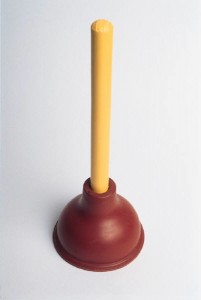
Less glamorous job
Describe a typical trip, day-by-day, like arrive in day one, sail to next island, , spend day two snorkeling, then hike up a mountain and sing “The Hills are Alive”…
Day 1 involves getting to the island and usually staying overnight in a local hotel (you can also pay ½ day rate for boat if it is available the night before).
Day 2 starts with the crew dividing – some to the grocery store, some to the liquor store, and some to do the boat briefing and checkout with the charter company.
Once we’re underway, there really isn’t ever a typical day, which makes the trip very interesting. We do have a “plan”, but we always have a “plan b” to take into account prevailing winds/weather.
Each day we have breakfast on board and then head out of the harbor.
Most days involve a snorkel spot and a lunch spot on the way to our overnight stop.
One thing we really like is the flexibility to move at whatever pace you want, there isn’t a schedule to follow. The charter companies ask that you arrive in your overnight location around 4pm, so that you can see the sea bottom while the sun is still high in the sky, and also gets you to Happy Hour on time! In the BVI, most harbors have a field of mooring balls to secure the boat overnight. The fee to use the mooring balls is usually $20-$25 per night. There is also the option to anchor for the night, but we sleep a lot better knowing the boat is secure on a mooring ball. There are also some harbors where you can have a slip with power, etc., but we prefer to be out on the water. The last day is busy getting everything off the boat and getting back to airport.
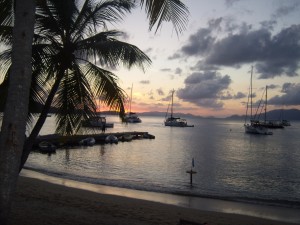
Sunset at Cooper Island – Manchioneel Bay. Photo courtesy of Kristi Moen© Click on photo to see full size.
- (Kristi says,”Cooper Island is a great place to go to shore for sunset, cocktails and conch fritters before having dinner on board. Great views and quiet place.”)
So, this is an annual trip. How many friends go? Any snoreres? Are they invited back?
The first few trips, we had the same 3 other couples. The past few trips, we have actually had enough “demand” for 2 weeks, so we go around Tortola for one week, then the first group flies out, the second group flies in, and we do it all again!
Yes, we have some snorers (the Helmswoman, for example, ha!), but on the catamaran, the cabins are spread out to the ends of each pontoon, so you really don’t hear your fellow crew.
Where do you sleep? Anyone under the stars?
Each of the cabins have at least a full size bed…. the bigger the boat, obviously the bigger the cabins and the beds. We have slept under the stars on occasion, but in Caribbean, it generally rains a bit overnight, so we usually end up in our cabins. Once you leave the dock (and shore power), you lose the air conditioning, so the cabins have small fans and you sleep with the hatch open for ventilation. Well, until it rains….. Usually someone will be on the trampoline for sunrise in their blankets.
What do you eat? What’s your favorite on-board meal?
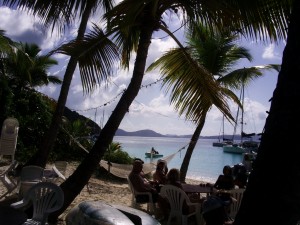
Soggy Dollar on Jost Van Dyke, White Bay. Photo courtesy of Kristi Moen©
There are several great restaurants and famous bars around the BVI, like Foxy’s and Soggy Dollar on Jost Van Dyke, that you’ll want to try. We always have breakfast on board, but usually split lunch and dinner with one on shore and one on board based on the day’s itinerary. There is a small BBQ grill on board, so most meals involve grilling in some way. We try to vary the meat – chicken one night, steak the other, fish, etc. One thing that works well is that each couple takes one meal to prepare – and they plan it all. This couple leaves Happy Hour on the beach early to prepare cook and serve the meal, make the drinks, and do all the cleanup – while the rest of the crew does whatever they would like – arriving in time to enjoy a relaxing dinner on board. This way, you work hard one night, but get to enjoy all the other nights. Also, the galley is not really large enough for more than 2 – so it works out perfectly.
What do you bring? What do you buy when you get there?
Groceries – To help make the trip a little more affordable, we bring most all of the dry goods (like rice, pasta, pop-tarts, cookies, energy bars, spices) and condiments (ketchup, mustard, soy, BBQ sauce) from home. We pack this all in a double large black trash bag and put into a cooler with wheels and check this as one piece of luggage. There are Velcro straps you can buy to hold the cooler lid shut (and keeps the handle in place). This keeps everything from breaking, and then you have an extra cooler on the boat, as well as something to carry your souvenirs home in! Refrigerator space is very limited on the boat, so we go to the market every other day for fresh meat and veggies.
Clothes – Bring a LOT less than you think you need. It’s casual everywhere you go, and you will be in your swim suits the majority of the time. Also, things get a little “boaty” after a few days, so here’s a trick – get the extra-large Ziplock bags (2.5 gallon) and put 1-2 days worth of clothes in each bag with a dryer sheet. Then, when you open it, it is nice and fresh! And pack a few pairs of socks (see departure day notes). And a pair of shoes you can walk/hike in – there are some spectacular morning hikes from many overnight coves.
Other – A few small waterproof flashlights (Target has some with blinking lights for safety, too). You do a lot of traveling in and out of the dinghy at night, on docks, and in bars. Walkie Talkies to communicate to others when you split up (as you only have one dinghy). Febreeze (remember “boaty” comment). Games & Cards.
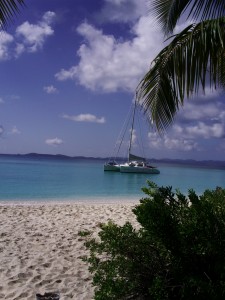
Off the beach at Soggy Dollar, Jost Van Dyke, White Bay. Photo courtesy of Kristi Moen© Click on photo for full screen view.
To be continued…
If you have any questions, have a fascinating sailing tale or just wanna extend the conversation…please fill in the reply box below or hit the talk balloon by the title and leave us a comment:)
NOTE: Please check with boat rental companies for all of their rules and most of all, be safe:)
Thanks so much for stopping by:)
Please Respect Copyright
Thanks for visiting my blog. All work is copyright of the author/artist, unless otherwise noted. If you would like to put anything from this site on your website please quote the author and provide a link back to this blog. All rights reserved.
© Kristi Rhodes 2012

